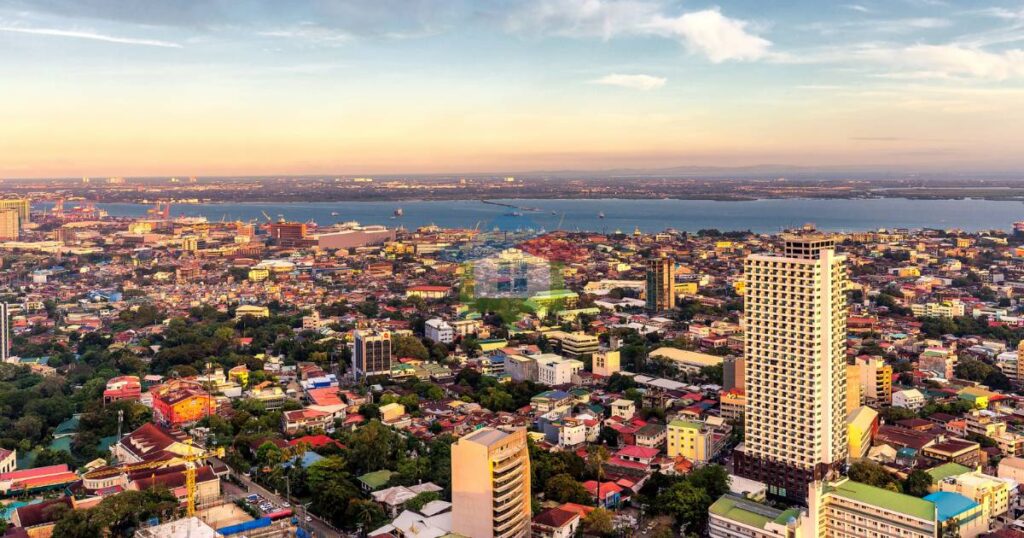Cebu
(/sɛˈbuː/; Cebuano: Sugbo), officially the Province (Cebuano: Lalawigan sa Sugbo; Tagalog: Lalawigan ng Cebu; Hiligaynon: Kapuroan sang Sugbo), is a province of the Philippines located in the Central Visayas (Region VII) region, and consists of a main island and 167 surrounding islands and islets. Its capital and largest city is Cebu City, nicknamed “the Queen City of the South”, the oldest city and first capital of the Philippines, which is politically independent from the provincial government.
The Cebu Metropolitan Area or Metro Cebu is the second largest metropolitan area in the Philippines (after Metro Manila) with Cebu City as the main center of commerce, trade, education and industry in the Visayas. Being one of the most developed provinces in the Philippines, in a decade it has transformed into a global hub for business processing services, tourism, shipping, furniture-making, and heavy industry. Mactan–Cebu International Airport, located on Mactan Island, is the second busiest airport in the Philippines.
History
See also: History of the Philippines
Early history
See also: Cebu (historical state)
The name “Cebu” comes from the old Cebuano: sibu or sibo (“trade”), a shortened form of sinibuayng hingpit, ‘the place for trading’. It was originally applied to the harbors of the town of Sugbu, the ancient name for Cebu City.[5] Alternate renditions of the name by traders between the 13th to 16th centuries include Sebu, Sibuy, Zubu, or Zebu, among others.[6] Sugbu or Sugbo, in turn, is derived from the Old Cebuano term for “scorched earth” or “great fire”.[5][7]
A map showing the route of the Magellan expedition circumnavigating the world.
The Rajahnate of Cebu was a native kingdom which existed in Cebu prior to the arrival of the Spaniards. It was founded by Sri Lumay otherwise known as Rajamuda Lumaya,[8] a half-Malay, half-Tamil prince of the Chola dynasty[8] who invaded Sumatra in Indonesia. He was sent by the Maharajah[8] to establish a base for expeditionary forces to subdue the local kingdoms, but he rebelled and established his own independent Rajahnate instead.[8] The capital of the nation was Singhapala (சிங்கப்பூர்)[9] which is Tamil-Sanskrit[10] for “Lion City”, the same rootwords with the modern city-state of Singapore. The later Spanish chronicler Antonio Pigafetta mispronounced Singhapala as Cingopola instead.[11]
Spanish colonial period
The arrival of Portuguese explorer Ferdinand Magellan in 1521 began a period of Spanish exploration and colonization.[12][13]
Losing the favour of King Manuel I of Portugal for his plan of reaching the Spice Islands by sailing west from Europe, Magellan offered his services to King Charles I of Spain (Charles V, Holy Roman Emperor). On September 20, 1519, Magellan led five ships with a total complement of 250 people from the Spanish fort of Sanlúcar de Barrameda en route to southeast Asia via the Americas and the Pacific Ocean. They reached the Philippines on March 16, 1521. Rajah Kolambu the king of Mazaua told them to sail for Cebu, where they could trade and obtain provisions.
Arriving in Cebu City, Magellan, with Enrique of Malacca as a translator, befriended Rajah Humabon the Rajah or King of Cebu, and persuaded the natives to ally themselves with Charles I of Spain. Humabon and his wife were given Christian names and baptized as Carlos and Juana. The Santo Niño was presented to the native queen of Cebu, as a symbol of peace and friendship between the Spaniards and the Cebuanos. On April 14 Magellan erected a large wooden cross on the shores of Cebu. Afterwards, about 700 islanders were baptized.
Magellan soon heard of Datu Lapu-Lapu, a native king in nearby Mactan Island, a rival of the Rajahs of Cebu. It was thought that Humabon and Lapu–Lapu had been fighting for control of the flourishing trade in the area. On April 27 the Battle of Mactan occurred, where the Spaniards were defeated and Magellan was killed by the natives of Mactan[14] in Mactan Island. According to Italian historian and chronicler Antonio Pigafetta, Magellan’s body was never recovered despite efforts to trade for it with spice and jewels. Magellan’s second-in-command, Juan Sebastián Elcano, took his place as captain of the expedition and sailed the fleet back to Spain, circumnavigating the world.
Depiction of the Cebuano tattooed warrior class (timawa) in the Boxer Codex (c. 1590)
Survivors of the Magellan expedition returned to Spain with tales of a savage island in the East Indies. Consequently, several Spanish expeditions were sent to the islands but all ended in failure. In 1564, Spanish explorers led by Miguel López de Legazpi, sailing from Mexico, arrived in 1565, and established a colony.[15] The Spaniards fought the King, Rajah Tupas, and occupied his territories. The Spaniards established settlements, trade flourished and renamed the island to “Villa del Santísimo Nombre de Jesús” (Town of the Most Holy Name of Jesus). Cebu became the first European settlement established by the Spanish Cortes in the Philippines. In 1595, the Universidad de San Carlos was established and in 1860, Cebu opened its ports to foreign trade. The first printing house (Imprenta de Escondrillas y Cia) was established in 1873 and in 1880, the Colegio de la Inmaculada Concepcion (College of the Immaculate Conception) was established and the first periodical The Bulletin of Cebu (“El Boletin de Cebú”) began publishing in 1886.
American colonial period
In 1898, the island was ceded to the United States after the Spanish–American War and Philippine–American War. In 1901, Cebu was governed by the United States for a brief period, however, it became a charter province on February 24, 1937, and was governed independently by Filipino politicians.
World War II
Cebu, being one of the most densely populated islands in the Philippines, served as a Japanese base during their occupation in World War II which began with the landing of Japanese soldiers in April 1942. The 3rd, 8th, 82nd and 85th Infantry Division of the Philippine Commonwealth Army was re-established from January 3, 1942, to June 30, 1946, and the 8th Constabulary Regiment of the Philippine Constabulary was reestablished again from October 28, 1944, to June 30, 1946, at the military general headquarters and the military camps and garrisoned in Cebu city and Cebu province. They started the Anti-Japanese military operations in Cebu from April 1942 to September 1945 and helped Cebuano guerrillas and fought against the Japanese Imperial forces. Almost three years later in March 1945, combined Filipino and American forces landed and reoccupied the island during the liberation of the Philippines. Cebuano guerrilla groups led by an American, James M. Cushing, is credited for the establishment of the “Koga Papers”,[16] which is said to have changed the American plans to retake the Philippines from Japanese occupation in 1944, by helping the combined United States and the Philippine Commonwealth Army forces enter Cebu in 1945. The following year the island achieved independence from colonial rule in 1946.
During the Marcos dictatorship
Cebu became a key center of resistance against the Marcos dictatorship,[17] first becoming apparent when the hastily put-together lineup of Pusyon Bisaya defeated the entire slate of Marcos’ Kilusang Bagong Lipunan (KBL) in Region VII.[18]
Among the Cebuanos immediately arrested by the Marcos dictatorship when Martial law was announced on September 23, 1972, were columnist and future National Artist Resil Mojares and human rights lawyer and Carcar Vice Mayor Democrito Barcenas, who were both detained at Camp Sergio Osmeña.[19][20][21]
One of the Marcos Martial Law Desaparecidos from Cebu was Redemptorist Priest Fr. Rudy Romano,[22] a prominent Marcos critic and Executive Secretary of Cebu’s Coalition against People’s Persecution, who was accosted by armed men in Tisa, Labangon, Cebu City on June 11, 1985, and never seen again.[23][24] Levi Ybañez, Romano’s colleague in the Coalition against People’s Persecution, was abducted on the same day as Fr. Romano, and was also never heard from again.[25][26] Ribomapil Holganza, a prominent leader of Cebu’s opposition was also arrested together with his son on Christmas Day, December 25, 1983, on political charges. He was subsequently released and cleared of all charges.[27]

